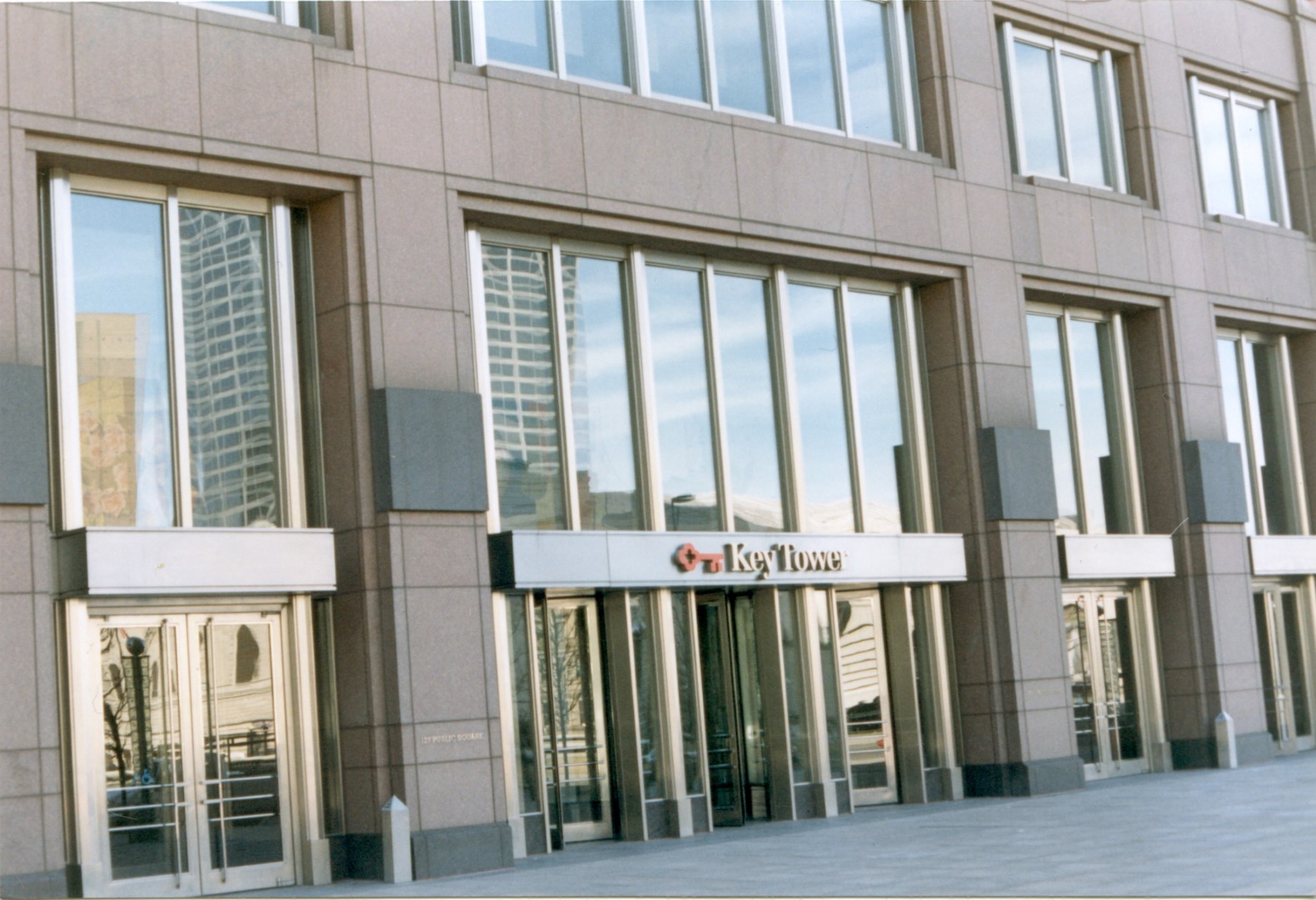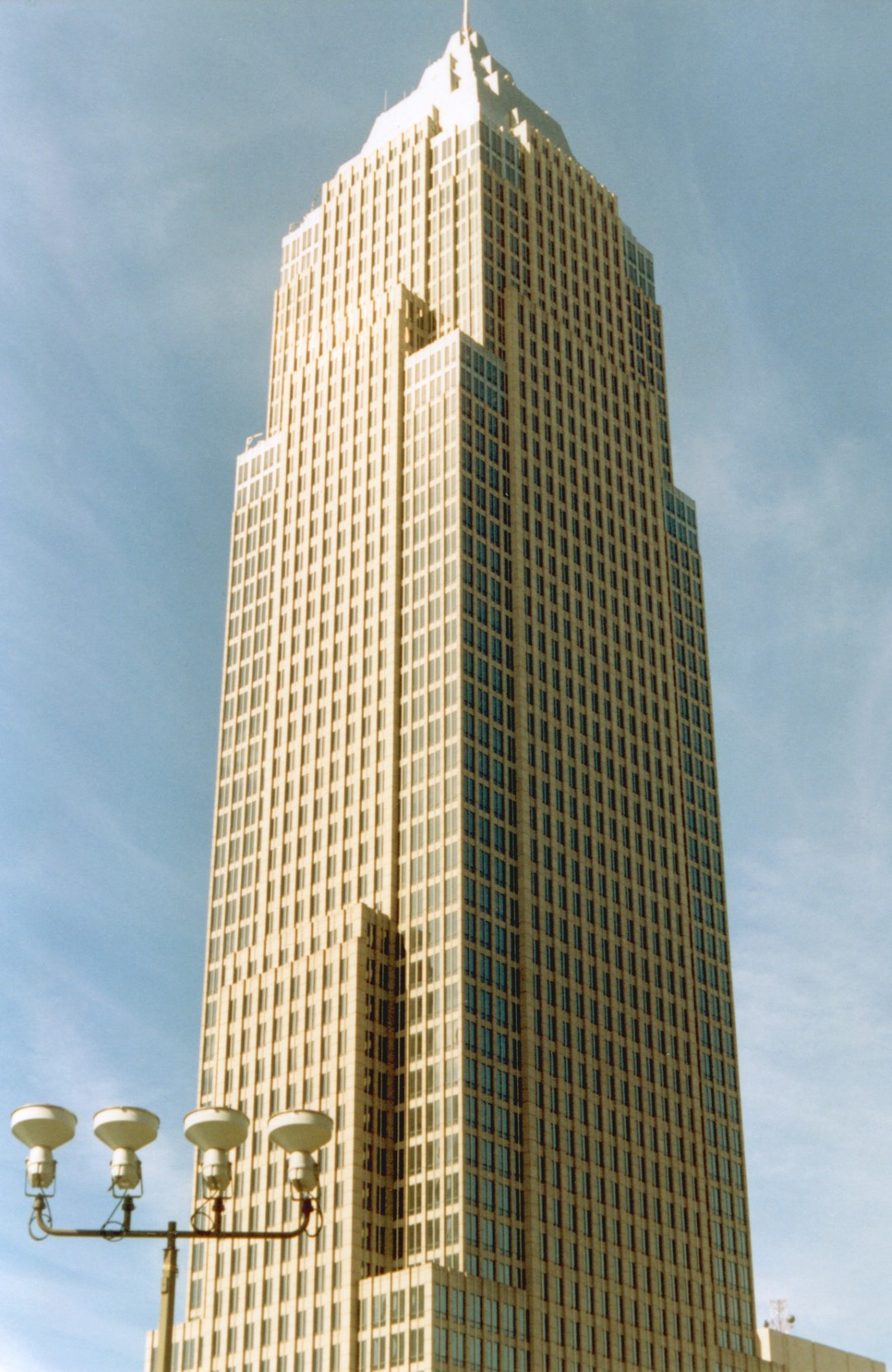
Rising to more than 700 feet, Key Tower is the tallest building on the Cleveland skyline. Clad in granite from top to bottom, the 58-story building is the corporate headquarters of KeyBank.
After nearly 30 years of withstanding the winds and weather blowing in off of Lake Erie, the joints between the building’s stonework required repair. To reach the façades of the structure, extensive scaffolding was anchored to the mounts for the building’s window washing apparatus. Workers began the joint repair at the roofline, and then descended down the side of the building. When a vertical section of the facade was completed, the scaffolding was shifted horizontally to the next area and work began again from top to bottom. Approximately 1/3 of the building was completed during each year of the three-year project.
The Project Involved:
- Interfacing with building management and the engineering team
- Inspection of all exterior stonework
- Removal of deteriorated sealant material between the granite panels
- Cleaning and preparation of the joint areas
- Installation of foam backer rod in each joint to ensure uniform sealant depth
- Injection of new silicone sealant
Project Details
Project Included
- Sealants
- Pressure Washing
Glossary Terms

